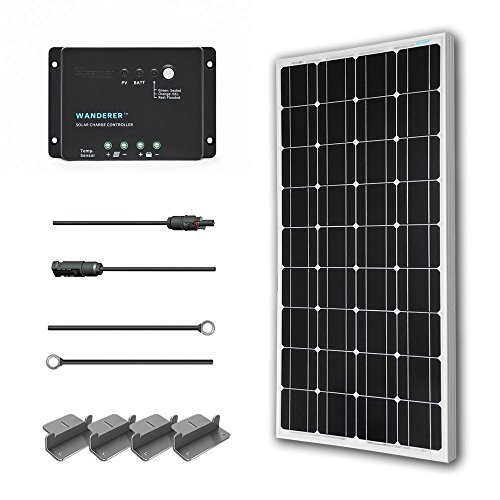Cobra CPI 1575 1500 Watt 12 Volt DC to 120 Volt AC Power Inverter
Cobra CPI 1575 1500 Watt 12 Volt DC to 120 Volt AC Power Inverter
- 1500 Watts Continuous Power, 3000 Watts Peak Power
- Three grounded AC receptacles and 5-Volt USB output
- LED function/status meter
- Remote on/off capable for easy control when installed out of reach
- Two-year limited warranty
This inverter provides household power on the go. It converts battery power to 120 V AC household power, allowing you to power up office equipment and household appliances from your vehicle. This unit is ideal for such appliances as microwave ovens (1000 watts or less), coffeemakers, laptops, TVs, video game consoles, CD and DVD players, cell phone chargers, and more. Power equipment and appliances from your vehicle. Click to enlarge. Great for automobiles, RVs, boats, tractors, trucks, and more. Click to enlarge. Includes three grounded AC receptacles and 5-volt USB output. Click to enlarge. How The Cobra Power Inverter Works
The Cobra power inverter is an electronic product that has been designed and built to take low-voltage DC (Direct Current) power from your automobile or other low-voltage power supplies and convert it to standard 115 volt AC (Alternating Current) power like the current you have in your home. This conversion process thereby allows you to use many
List Price: $ 189.95
Price: $ 189.95
More Solar Power Products




Works Great,
This product works great, I have a microwave, flatscreen tv, and a toaster i hook up to it and there is no problems. One thing I wish would have been mentioned somewhere is that you need to purchase a 150 amp inline fuse to put in the power wire from the battery to the inverter. So plan on getting one of those and have it ready so you can install it. I didnt know about it and spent some time in North Dakota trying to find one. Enjoy.
Was this review helpful to you?

|12VDC Wire size and fuse considerations,
This review is in response to some comments regarding wire and fuse size selections for this inverter and others like it.
In response to other review quoting a table from the National Electric Code (NEC). While the table that was posted is correct for 115VAC (household voltage) is does not translate directly to 12VDC (automotive voltage). When dealing with a 12 volt system there is less concern with wires overheating, at least in the way that the NEC considers it, and far more concern with voltage drop. When running wiring a reasonable distance (a couple hundred feet or so) there is little concern with voltage drop with AC power. But when dealing with DC, simply increasing your wiring distance 5-10′ can have a drastic effect on voltage drop. That is why this inverter should be wired with, at the very least, #4 wire and really should be installed with #2 or thicker, especially if you need to run wire 15 or 20 feet or more.
The purpose of a fuse in a DC system is to protect the rest of your electrical system in the event of a short. That is why you always want to install your fuse as close to the battery as possible (no more then 3′ if you can help it). As far as the amperage goes, there is a really good quick reference chart for automotive wire size that can be found at Tessco’s web site here:[Turns out I can’t link to an outside page so I’ll paste the contents of the table at the bottom]. But to boil it down, you can safely fuse a 12VDC circuit at 150, or 200 amps, or more on #4, #2 or #0 wire.
Now this unit at full load is something like 85% efficient. So if you do the math — 1500 Watts / 12 Volts / .85 efficiency = ~147 amps, A 150 AMP FUSE IS REQUIRED. If you take peak power into account you would need to double that to a 300 amp fuse, but because the inverter cannot run at peak power for more then a moment, a slow-blow 150amp fuse may work just fine, or perhaps you could step up a 200amp. I wouldn’t go all the way to a 300 amp fuse unless you really found that you needed it and had the inverted is wired in such a way that it could handle that level current (read: installed using very heavy gauge wire). Now if your vehicle is running while your inverter is working the amperage will be a little lower because your dealing with 14.4 VDC rather then 12 volts (watts = volts x amps -or- amps = watts / volts). But at the very least, a 150 amp ANL fuse is very good idea and not at all over sized.
Just a FYI on fuses, most car stereos are installed with AGU style fuses, but they only go up to 100 amps.
You will need an ANL style fuse to get one rated at 150 amps or more. See these links for examples:
Kicker 09ANL150 150 Amp ROHS Compliant ANL Fuse – Package of 2
Scosche EWFH Single ANL Fuse Holder
Wire Gauge Selection Table 12 Volt Circuit
Wire Distance
AMPS 3′ 5′ 7′ 10′ 15′ 20′ 25′
—————————
<5 18 18 18 18 18 18 18
6 18 18 18 18 18 18 18
7 18 18 18 18 18 18 18
8 18 18 18 18 18 16 16
10 18 18 18 18 16 16 16
11 18 18 18 18 16 16 14
12 18 18 18 18 16 16 14
15 18 18 18 18 14 14 12
18 18 18 16 16 14 14 12
20 18 18 16 16 14 12 10
22 18 18 16 16 12 12 10
24 18 18 16 16 12 12 10
30 18 16 16 14 10 10 10
40 18 16 14 12 10 10 8
50 16 14 12 12 10 10 8
100 12 12 10 10 6 6 4
150 10 10 8 8 4 4 2
200 10 8 8 6 4 4 2
Was this review helpful to you?

|